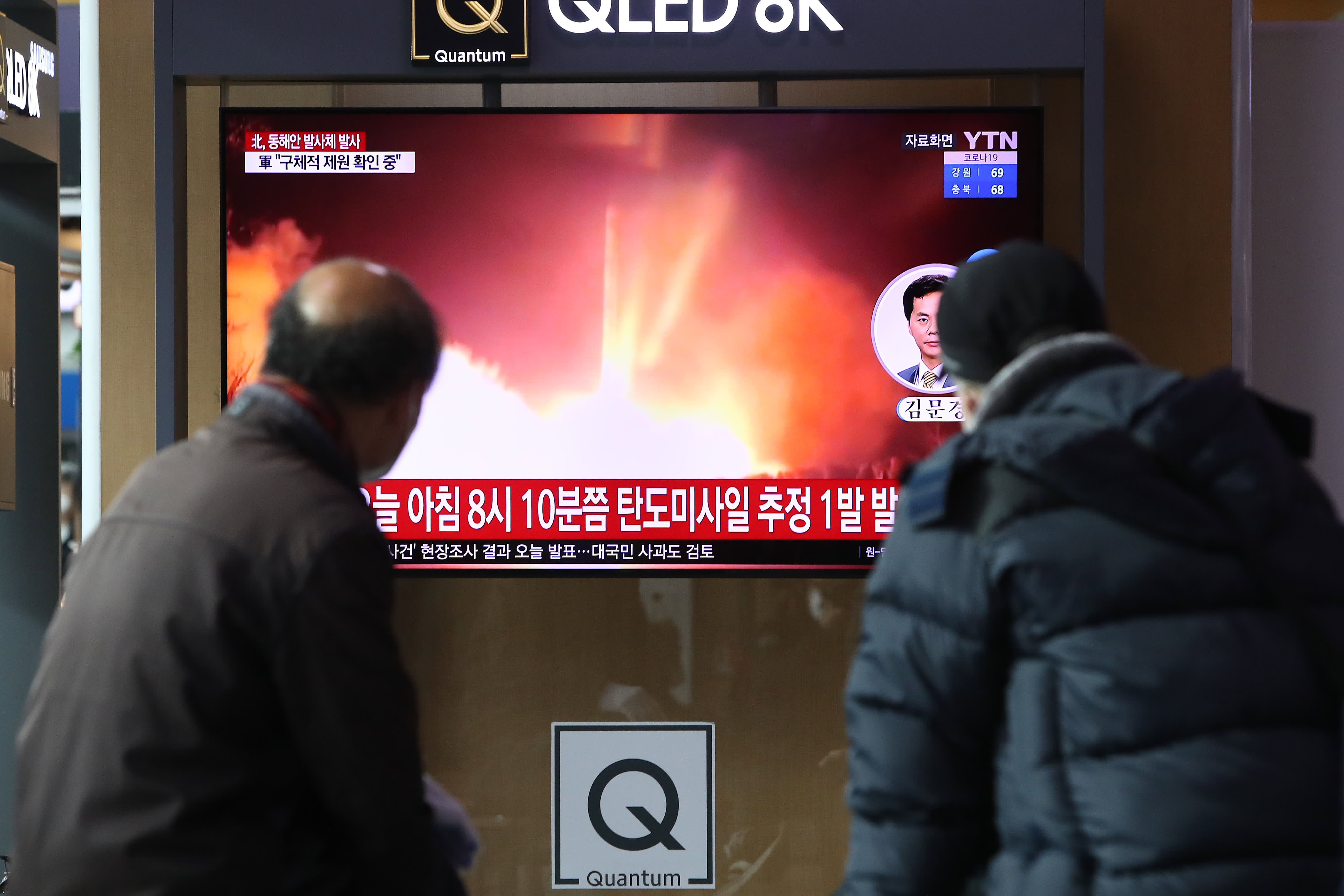
People watching a TV at the Seoul Railway Station in South Korea, which showed a file image of North Korean missile launch on Jan. 5, 2022 in Seoul, South Korea.
Chung Sung-Jun | Getty Images
North Korea is seeking to build up its missile capability in order to boost its “bargaining position,” says one political analyst, who pointed to the country’s latest attempt last week to test-fire a hypersonic missile.
On Thursday, state media claimed the country had test-fired a “hypersonic missile” the previous day.
Pyongyang said “the missile made a 120 km lateral movement in the flight distance of the hypersonic gliding warhead” before it “precisely hit a set target 700 km away,” the Korean Central News Agency reported.
“You start the new year and North Korea does this type of test that shines the light back on it,” John Park, director of the Korea Project at the Harvard Kennedy School, told CNBC’s “Squawk Box Asia” on Monday.
“This goes all the way back to February of 2019. That was the last major summit between Kim and Trump,” Park pointed out, referring to the second nuclear summit between then President Donald Trump and North Korean leader Kim Jong Un, which was cut short when no agreement could be reached.
We believe that North Korea’s report dated Jan. 6 on the firing range of their hypersonic missile as well as its capabilities have been exaggerated.
South Korea defense ministry
“From that perspective, [North Korea] is building up the capabilities to have a stronger bargaining position is one interpretation that is growing in terms of popularity right now.”
Hypersonic weapons have both speed and accuracy, according to the Royal United Services Institute. They combine the advantages of ballistic missiles — which are fast but travel along a predictable trajectory — and cruise missiles, which are slower but have greater accuracy, according to analysts from the independent think tank.
South Korea dismisses hypersonic claims
South Korea’s Defense Ministry on Friday dismissed North Korea’s claim that it tested a hypersonic missile, saying instead that the regime likely fired a conventional ballistic missile.
“We believe that North Korea’s report dated Jan. 6 on the firing range of their hypersonic missile as well as its capabilities have been exaggerated,” said a defense ministry official in a background briefing.
“The missile [North Korea] claimed as hypersonic was, in fact, a ballistic missile, which precision technology has been upgraded. Our assessment is based on intelligence offered by the U.S. and Japan, in addition to our assessment,” it added.
This was the second reported North Korean test of a hypersonic gliding missile to date — following one in September last year. Pyongyang is seeking to add the sophisticated weapon to its arsenal despite international sanctions and condemnation.
“Hypersonic weaponry represents the most significant advancement in missile technology since ICBMs,” according to an October report by RUSI analysts, who were referring to intercontinental ballistic missiles.
“Thanks to their extreme speed and ability to manoeuvre, hypersonic weapons are on their way to undermining nuclear deterrence postures and creating cracks in strategic stability by the mid-2020s,” the an independent think tank said.
The United Nations Security Council have imposed sanctions on North Korea’s nuclear programs and banned all ballistic missile and nuclear tests from Pyongyang.
“The key thing right now… if you look at the responses and the menu of choices how to respond to what North Korea claims are hypersonic missile tests — those response tools are limited,” noted Park.
‘Even more potent’
Park also said that these type of hypersonic missiles affect the military balance and pose a security threat to the region.
A hypersonic missile because of its ability to fly low can be tricky to detect using the ballistic missile defense systems that currently exist, he added.
Therefore, if Pyongyang were to add these hypersonic capabilities, “North Korea’s nuclear arsenal becomes ever more potent,” Park noted.
The main challenge remains how the U.S. and its allies in the region — mainly South Korea and Japan — are going to manage North Korea in the near term, he added.
“It leads to two fundamental questions going forward. How you are going to deal with a nuclear weapon state with defense capabilities and with internal instability? So the stakes are high and they’re growing,” said Park.
For now, the robust alliance between the U.S. with South Korea and with Japan remains critical to maintaining stability in the region, he noted. Last year, the U.S., Japan and South Korea reiterated their policy on coordinating closely on North Korea.
“Those two key bilateral alliances are still seen as the main pillars of a viable and very effective deterrence capability,” Park said.




